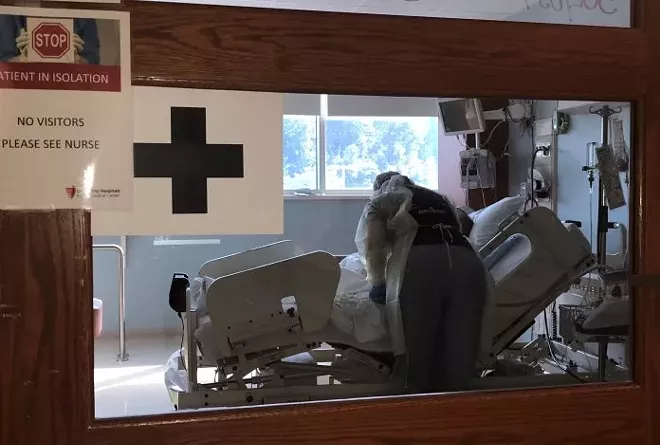One Mutation May Have Set the Coronavirus Up to Become a Global Menace
Posted By Erin Garcia de Jesus, Science News on Fri, Jul 16, 2021
A single change in a key viral protein may have helped the coronavirus behind COVID-19 make the jump from animals to people, setting the virus on its way to becoming the scourge it is today.
That mutation appears to help the virus’ spike protein strongly latch onto the human version of a host protein called ACE2 that the virus uses to enter and infect cells, researchers report July 6 in Cell. That ability to lock onto the human cells was stronger with the mutated virus than with other coronaviruses lacking the change. What’s more, the mutated virus better replicates in laboratory-grown human lung cells than previous versions of the virus do.
“Without this mutation, I don’t think the pandemic would have happened like it has,” says James Weger-Lucarelli, a virologist at Virginia Tech in Blacksburg. The coronavirus’s global spread might have been less likely, he says.
Where exactly the coronavirus came from is still a mystery that researchers are trying to unravel (SN: 3/18/21). But figuring out how an animal virus gained the ability to infect people could help researchers develop ways to prevent it from happening again, such as with antivirals or vaccines, Weger-Lucarelli says.
The new findings hint that the mutation is important, but “it’s potentially one of multiple” changes that made the jump from animals to people possible, says Andrew Doxey, a computational biologist at the University of Waterloo in Canada who was not involved in the study. “It’s not necessarily the only mutation.”
Virologist Ramón Lorenzo Redondo agrees. The researchers employed an approach that is not typically used for viruses, says Redondo, of Northwestern University Feinberg School of Medicine in Chicago. That means the method may have overlooked other important mutations.
In the study, Weger-Lucarelli and colleagues analyzed more than 182,000 genetic blueprints of the coronavirus, looking for signs of mutations that might have helped the virus adapt to and spread among humans. The team compared changes in the building blocks, or amino acids, of the virus’ spike protein with four coronaviruses from bats or pangolins that don’t infect people. The scientists pinpointed one swap that replaced the amino acid threonine that is found in the animal viruses with the amino acid alanine that is found in the coronavirus that causes COVID-19.
The researchers predict that the mutation, named T372A, removes some sugars that coat the spike protein. Those sugars might be “getting in the way,” Weger-Lucarelli says, so removing them gives the virus better access to ACE2 to break into cells.
Experiments suggest that’s true. Once a virus with an alanine gets into laboratory-grown human lung cells, it replicates more than versions with threonine, the team found. In the future, the researchers plan to explore the role other mutations might have played to help an animal virus adapt to humans.
It’s unclear when the virus acquired the T372A mutation, says Arinjay Banerjee, a virologist with the Vaccine and Infectious Disease Organization at the University of Saskatchewan in Saskatoon, Canada, who was not involved in the study. A bat coronavirus with a threonine at that spot may have infected people first and then rapidly adopted an alanine, helping the virus transmit more efficiently among people. Or it’s possible that the alanine appeared in bats or in another animal before making the jump.
“Those questions, I think, are still outstanding,” Banerjee says.
Originally published by Science News, a nonprofit newsroom. Republished here with permission.
Tags: Covid-19, Coronavirus, Image

No comments:
Post a Comment